 Mortgage Professionals Canada (previously CAAMP) released its marquis fall mortgage research report this month. We’ve extracted all of the trends that seem new or notable.
Mortgage Professionals Canada (previously CAAMP) released its marquis fall mortgage research report this month. We’ve extracted all of the trends that seem new or notable.
You’ll see the most relevant findings below. (Data points of special interest appear in blue.)
**********
The Market Overall
- 9.74 million: Number of homeowner households in Canada (up from 9.62 million in 2014)
- 5.71 million: The number of households who have mortgages and may also have a Home Equity Line of Credit (HELOC)
- 520,000: The number of households who have no mortgage but do have a HELOC
- 2.15 million: The number of Canadian households who have HELOCs
- 3.51 million: Number of households who are mortgage-free (down from 3.98 million in 2014)
- $3 trillion: The total amount of home equity wealth in Canada
- By comparison, Canada’s annual GDP is about $1.8 trillion. Imagine knocking 20% off home prices, and the wealth devastation that would have—particularly for people who rely on their home equity for retirement.
Housing and Mortgaging Activity During 2015
- 5%: Percentage of Canadian households that buy a home in any given year
- 89%: Percentage of homes purchased in 2015 that have mortgages or a HELOC
- 76%: Percentage of 2015 homebuyers choosing fixed rates
- 20%: Percentage of 2015 homebuyers choosing variable/adjustable rates
- 4%: Percentage of 2015 homebuyers choosing combination mortgages
- Hybrids continue to be the most undermarketed and underrated mortgage type available, especially with so much rate uncertainty (and not just rate hike uncertainty, but rate cut uncertainty)
- 660,000: Number of homes purchased in 2015 (existing and resale combined)
- 590,000: Number of households who bought a home and financed it (mortgage and/or HELOC) in 2015
- 15% chose both a mortgage and a HELOC (typically a “readvanceable mortgage”)
- 1 million: Number of homeowners who renewed or refinanced their mortgages during 2015
- And convenience continued to trump absolute savings as the large majority renewed with their existing lender
Mortgage Types and Amortization Periods
- 24%: Percentage of mortgages on homes purchased during 2014 or 2015 that have extended amortization periods
- 23%: Percentage of mortgages with amortizations of 26-30 years
- 1%: Percentage with amortizations over 30 years
- Thank you to the lenders who continue to offer 35-year amortizations (RMG, B2B Bank, Alterna, Vancity, Coast Capital and so on). You do a tremendous service to well-qualified borrowers who prefer payment flexibility
Actions that Accelerate Repayment
- 950,000: Number of mortgage holders who voluntarily increased their regular payments in 2015
- 1 million: Number of mortgage holders who made a lump-sum payment in the past year
- That’s about 17.5% of mortgagors
- $15,300: The average lump-sum payment amount
Renting Secondary Suites
- 14%: Percentage of mortgage holders who rent or plan to rent out part of their home
- For many of these folks, it’s now easier to qualify for a mortgage, courtesy of insurers’ more generous add-back rules
- 21%: Percentage of those who rent out (or plan to rent out) a portion of their home, who indicated: “I need to rent a room/unit in my home to afford my mortgage”
- Given that secondary suites have been an important income source for homeowners, Dunning says it would be useful to clarify and simplify the processes for complying with municipal standards. We second that idea as most new landlords don’t know all the requirements to have a legal suite
Recent Homebuyer Mortgage Choices
- 45%: Percentage of mortgages that were obtained from a Canadian bank
- 42%: Percentage of mortgages that were obtained from a mortgage broker
- 13%: Percentage of mortgages that were obtained elsewhere
Interest Rates
- 3.07%: The average mortgage interest rate in Canada
- Compare that to 3.50%, the average interest rate in the 2013 fall survey
- Average actual rate for 5-year fixed-rate mortgages (2.81%) has been 1.87 percentage points lower than typical “posted” rates
- 2.80%: The average interest rate for mortgages on homes purchased during 2015
- 2.67%: The average rate for mortgages renewed in 2015
- +/- 1/2%: Estimated change in annual credit growth for every one point change in mortgage interest rates
Home Equity
- 49%: The average percentage of home equity for homeowners who have a mortgage but no HELOC
- 75%: Percentage of the 5.71 million homeowners with mortgages (but not HELOCs) who have an equity ratio of 25% or more
- >300,000 (3%): Number of homeowners who have less than 10% equity
- $136,000: The average approved HELOC value
- 10%: Percentage of homeowners who have fully utilized their available HELOC
Equity Take-Out
- 9% (850,000): Percentage of homeowners who took equity out of their home in the past year
- $70,000: The average amount of equity taken out
Sources of Down Payments by First-time Homebuyers
- 21%: The average down payment made by first-time buyers, as a percentage of home price
- Dunning notes that this percentage has remained stable over time, at 20% of the purchase price
- The report notes that, “the rapid rise in house prices means that required down payments have increased relative to incomes”
- “Given the increasing burden of down payments relative to incomes, that stability is surprising,” Dunning said
- 19%: Percentage of down payments by first-time buyers that came from family or friends (in the form of loans or gifts)
- The long-term average is 15%
- 26%: Percentage of down payment funds for first-time buyers that is loaned from financial institutions
- 8%: Percentage of down payment funds that come from RRSP withdrawals
- 93 weeks: The amount of working time at the average wage needed to amass a 20% down payment on an average-priced home
- This is up from 53 weeks two decades ago
Homeownership as “Forced Saving”
- 50%: Approximate percentage of the first mortgage payment that goes towards principal repayment (based on current rates)
- This ratio rises incrementally with every mortgage payment a borrower makes
- Mortgage payments now include a higher amount of principal repayment, “in both absolute dollar terms and as a percentage of the monthly payment.” This suggests that homebuyers are “now entering into very aggressive forced saving programs,” says Dunning
- By contrast the first payment principal ratio was 31% a decade ago when rates were at around 4.7%, and 13% two decades ago when rates were at around 8.2%
Mortgage Payments as a Percentage of Monthly Wages
- 39.5%: Mortgage payments in 2015 as a percentage of monthly wages
- 38.6% is the long-term average
On The Recent Minimum Down Payment Change
- 155,000: The number of home sales each year (out of 620,000) valued at $500,000 or more
- 120,000-125,000: Number of these that have mortgages
- 10,000 (2%): Percentage of annual homebuyers that would see increases to their required down payments as a result of Ottawa’s new rule
- This is obviously peanuts. It’s almost like the Department of Finance created a rule for rule’s sake, not that this author is complaining
- More on the new down payment rules
Sidebar: This year’s report was based on responses from 2,001 Canadians.




An excellent summary Rob – very easy to read and so many useful stats when presented this way thank you.
Thanks Ross! Happy New Year…
Equity take out 9% from 9.44 million, haha. Modify stats much? There are only 2.15 million HELOCs that’s 40%, nice try.
Concerned,
Perhaps you’d like to clarify your comment.
This data was taken directly from MPC’s report, which states on page 9:
“About 9% of homeowners (about 850,000 out of 9.74 million) took equity out of their home in the past year. The average amount is estimated at $70,000. These results imply that the total amount of equity take-out during the past year has been $59 billion, of which $44 billion was via mortgages and $15 billion was via HELOCs.”
Your 4th stat on your own page: “2.15 million: The number of Canadian homeowners who have HELOCs” Try measuring apples to apples. You have to have a HELOC to take equity out of your home by definition. Typical spin on stats to make the percentages look smaller when it suits you. Well done!
@Concerned
Equity take outs can be done with either a mortgage or a HELOC. Whenever you refinance a mortgage for more money, it is an equity take out.
You should apologize for being so rude and uninformed.
@Concerned.
Don’t be a moron and learn to read.
As indicated by @ Westmount above, in addition to the fact that equity take-outs can be in the form a mortgage or a HELOC (or a combination thereof), the 9% referred to was the percentage of homeowners who took out equity THIS YEAR.
Evidently, the main thing you need to be “concerned” about is your level of comprehension.
P.S. Great summary Rob. Well done.
While you are at it, you should report on peppers. I heard there were 50 homeowners in Canada that bought peppers. 50 of them bought yellow peppers and none of them bought red peppers. Is it more accurate to say that .0001% of homeowners in Canada bought yellow peppers, or that 100% of homeowning pepper buyers bought yellow peppers? The percentage is just a tad different. No apology when they misrepresent facts.
Frankly the only one misrepresenting facts appears to be you Concerned.
The statistic you questioned was clearly explained to you and you choose to ignore that explanation and not admit your fault.
The only thing worse than ignorance is conscious ignorance.
Typical, adding no value, confirming you haven’t understood the point. I can’t believe I spent time even trying to explain the fallacy to you with your level of comprehension.